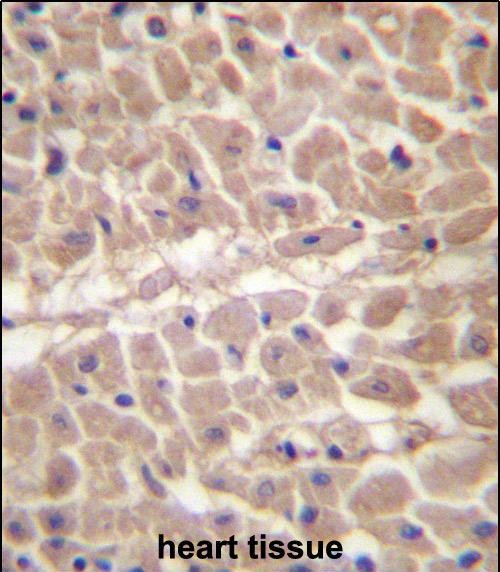

| WB | 1/1000 | Human,Mouse,Rat |
| IF | 咨询技术 | Human,Mouse,Rat |
| IHC | 1/100-1/500 | Human,Mouse,Rat |
| ICC | 技术咨询 | Human,Mouse,Rat |
| FCM | 咨询技术 | Human,Mouse,Rat |
| Elisa | 咨询技术 | Human,Mouse,Rat |
| Aliases | E3 ubiquitin-protein ligase TRIM11, 632-, Protein BIA1, RING finger protein 92, Tripartite motif-containing protein 11, TRIM11, RNF92 |
| Entrez GeneID | 81559 |
| WB Predicted band size | 52.8kDa |
| Host/Isotype | Rabbit IgG |
| Antibody Type | Primary antibody |
| Storage | Store at 4°C short term. Aliquot and store at -20°C long term. Avoid freeze/thaw cycles. |
| Species Reactivity | Human |
| Immunogen | This TRIM11 antibody is generated from rabbits immunized with a KLH conjugated synthetic peptide between 300-329 amino acids from the C-terminal region of human TRIM11. |
| Formulation | Purified antibody in PBS with 0.05% sodium azide. |
+ +
The TRIM11 antibody is a research tool designed to detect and study TRIM11 (Tripartite Motif-containing protein 11), a member of the TRIM protein family. TRIM proteins are characterized by their conserved RING, B-box, and coiled-coil domains, and they play roles in diverse cellular processes, including innate immunity, apoptosis, and protein ubiquitination. TRIM11. specifically, functions as an E3 ubiquitin ligase, regulating protein degradation via the ubiquitin-proteasome system. It is implicated in modulating autophagy, cell proliferation, and tumorigenesis, with studies linking its overexpression to cancers such as glioblastoma and hepatocellular carcinoma. Additionally, TRIM11 interacts with neurodegenerative disease-related proteins (e.g., α-synuclein, tau), suggesting a role in protein aggregation disorders like Parkinson’s and Alzheimer’s diseases.
The TRIM11 antibody is widely used in techniques like Western blotting, immunohistochemistry (IHC), and immunofluorescence (IF) to assess TRIM11 expression, localization, and interactions in cell lines, tissues, or disease models. Its specificity is validated through knockout controls or siRNA-mediated knockdown. Research utilizing this antibody has advanced understanding of TRIM11’s dual roles in cancer progression (promoting cell survival) and neuroprotection (clearing toxic aggregates). However, variability in antibody performance across experimental conditions requires careful validation. Overall, the TRIM11 antibody remains critical for elucidating TRIM11’s biological functions and its therapeutic potential in oncology and neurodegeneration.
×